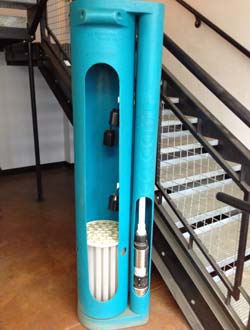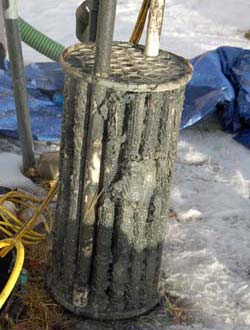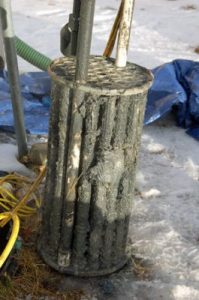Lift Station and Sewage Pump Repair
Alpine Septic Pumping’s Drain Cleaning Division can service and repair lift stations and sewage pumps for residential and commercial systems.
What is a lift station? A lift station is composed of two components: a pump and a control panel. A lift station “lifts” the effluent to the draining system when conventional gravity fed systems will not work.
Lift stations contain the pumps, valves and electrical equipment necessary to move sewage from low to higher elevation, making them an essential component of many municipal, commercial and residential sewer and septic systems.



Why use a lift station? In Alaska as in most of the Lower 48, standard septic systems are gravity driven with no mechanical or moving parts. However there are properties require a lift station as a standard system will not work. This happens with low lying properties or properties where the effluent has to be pumped up for proper disposal. Most septic tanks work off of gravity. Each component of the system is slightly lower than the preceding component. This allows the even movement of waste material and liquids without the need for mechanical devices. When this type of system is not possible a pump must be used.
What can go wrong? Your system will have a control panel with an alarm, and when activated, the alarm will alert you. This may when there is no power to the lift station tank or the float switch for the pump is not working or the pump itself is not function.
How can I fix it? Call your local service provider. Alpine Septic has trained lift station service technicians. Many companies will simply pull the basket and rinse off the system with a garden hose. This does not generally fix the problems associated with lift stations. A more thorough septic service will keep your lift station from causing those nasty sewage problems nobody wants.
In general, a proper lift station maintenance requires the following steps …

- Pump down vault to expose float switches
- Test float switches
- Power wash upper vault
- Disconnect pump out flow
- Raise basket and pump, washing down at same time
- Remove and wash down pump
- Remove float assembly from holder and set aside – clean for reassembly
- Suspend basket from secondary hooks and lift filter assembly from the basket
- Spray down inside of tower and bottom of tank
- Test float switches
- Reinstall filter, pump and float switches
- Lower complete assembly back into tank
- Turn on power and retest float switches
- Test and Secure
On the older style filters, failure to do regular maintenance can cause the filter to suck in and stop the flow of liquids needed to cool the pump – the result being possible pump failure.
